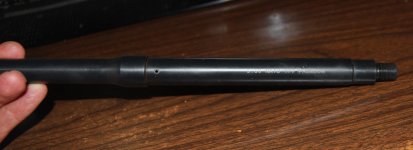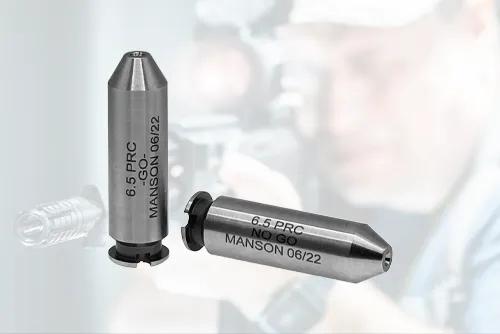OK I have what is supposed to be a Palmetto upper. I have bought a set of go nogo gauges to try and start being more meticulous about what I have bought before I shoot them. So putting the go gauge in the chamber and putting the BCG in battery it is flush with the end of the upper reciever. The problem is the No Go gauge does the same thing. Now I have a Wilson upper here and the go gauge works with the BCG in battery and the end is flush with the upper. The No Go however does not allow the BCG to go into battery and the BCG extends past the end of the upper reciever. In the mean time I also took the barrel off and cleaned things and used some of that Mil Spec moly grease for reassembly and torqued to 50 lbs. I am not real impressed with the kind of cheesy aluminum barrel nut and how the handguard mounts to it.
How do I determine if it is the bolt, BCG or barrel to receiver fitup that is the problem? I don't mind getting tools and gauges to figure this out I just don't want to jump in and start buying things without a reason to do so though.
If I'm understanding correctly?
You have a Palmetto upper that chambers both the go & no go guage.
Your Wilson chambers the go, but not the no go.
First off you need to remove the roll pin from the bolt that retains the ejector/spring & remove them. The exception to this is if you somehow managed to purchase one of the special guage sets that are machined to clear the ejector (doubt it).
The gauges that do not require removal of the ejector look like this.
Do the above to both bolts and confirm your original findings.
As was stated earlier you don't need the barrel installed. You typically just use the bare bolt in the loose barrel. You can use the disassembled bolt in the carrier if the barrel is already installed though.
Sounds like you did, but make sure the chamber/lug area is clean.
Now recheck the Palmetto with the no go. If it closes without resistance then add 1 piece of clear scotch tape to the back of the guage. If it still closes add another. Each piece of tape is an additional .002" If you are able to close with 2 pieces of tape then your beyond the Field guage & it should be considered unsafe.
Go gauge for 5.56 = 1.4646,
No-go gauge = 1.4706” + .002" x 2 = 1.4746", &
Field gauge = 1.4736”
Now use the Palmetto bolt in the Wilson barrel. If it will not close on the no go then you know it's the Palmetto barrel with the loose head space issue. If it does close on no go, but takes say 1 less piece of tape. Then you know the Wilson barrel is .002" tighter + approximately .004"-.006" lies in the Palmetto bolt.
All I ever buy is the go gauge & then I add tape if needed to figure out exactly where I'm at. Saves some money if you have a bunch of calibers.




